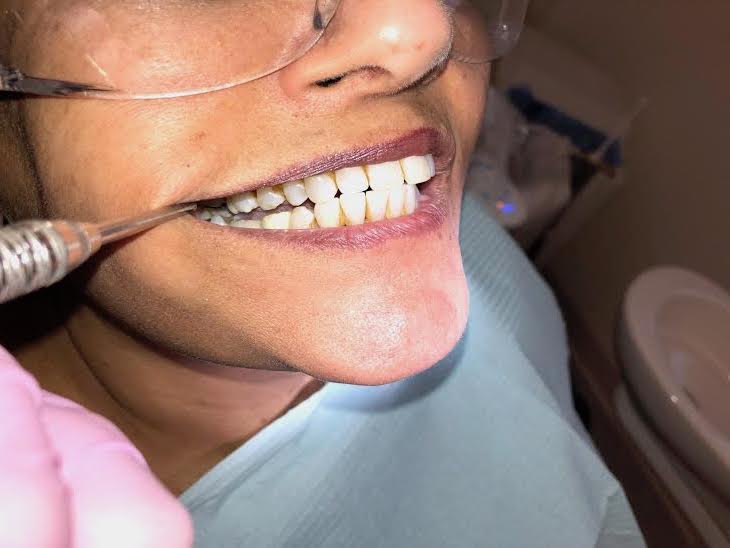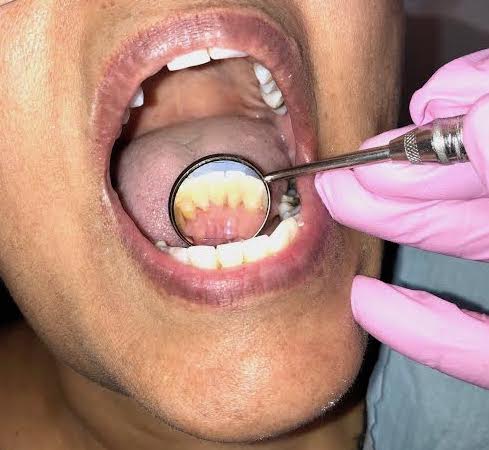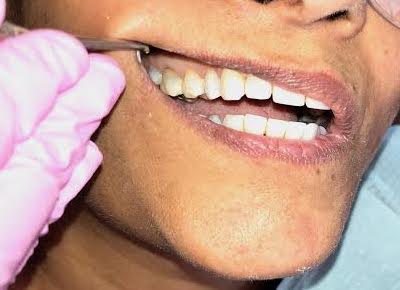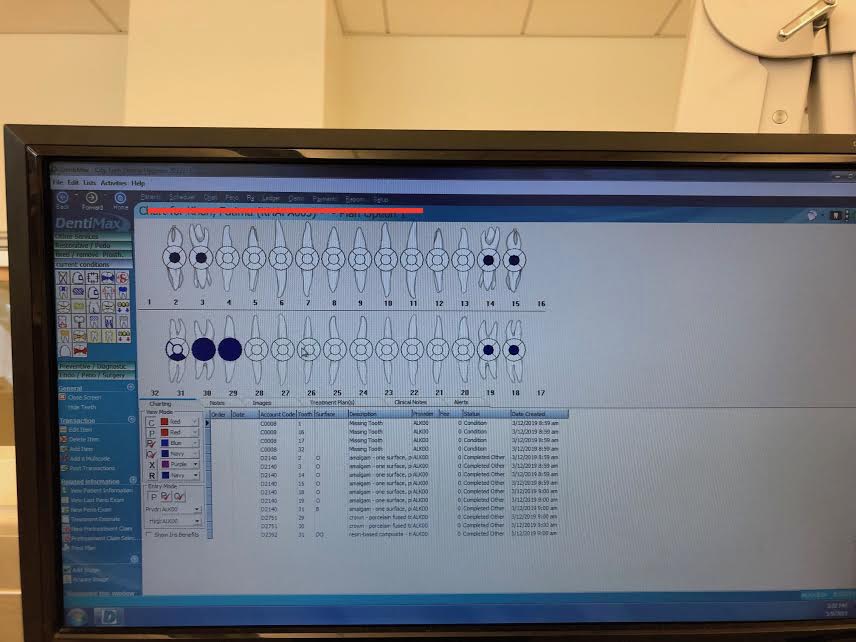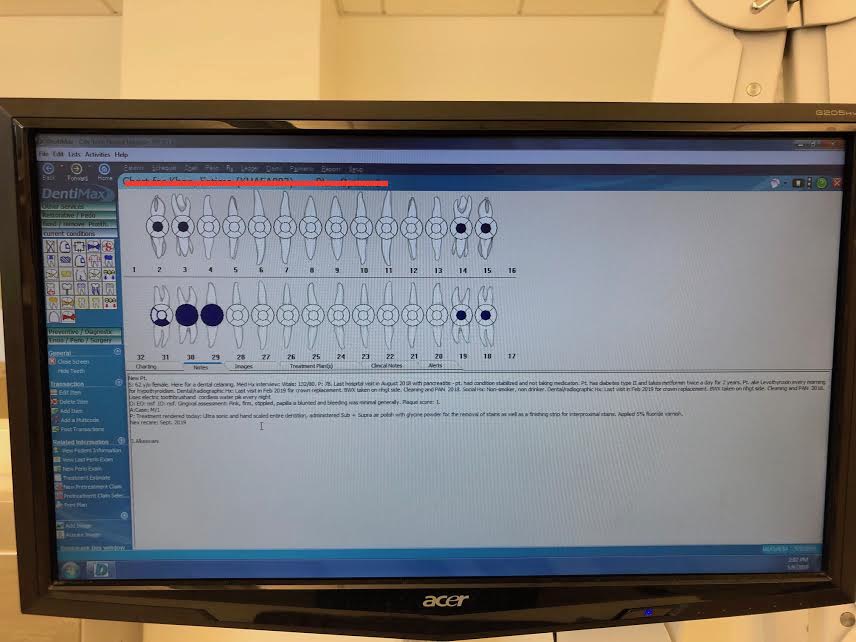Pictures of interproximal stain before the cleaning
After the cleaning:
Although this patient was not periodontally involved, I chose for this case to be one of my case studies because it encompasses many aspects of oral hygiene care in only one visit. It is also important to note that although her stains were not severe in comparison to some of the other heavy tobacco smokers that I have treated, perfection and an aesthetically pleasing smile is sought after by many.
This patient complained that no matter what she did or who she saw, the yellow stains in between her teeth would not be removed. I explained to her that stains like this are a result of constant and long term exposure to teas, coffees, and certain foods. She was doing an okay job brushing the facial and lingual surfaces of her teeth but neglected the interproximal surfaces. After assessing her dental and periodontal health, I demonstrated and instructed the use of waxed floss using the correct C shaped technique at the sulcus. I also explained to her that the use of a Cavitron and hand scaling would not remove all the stain so supra and subgingival use of an air polisher with glycine powder would be very beneficial for her. We used a finishing strip to remove the last bit of stain that she had. We also discussed the “yellowness” found at the cervical third of some of her teeth. These were slight areas of recession that made the tooth appear more yellow than the rest of her tooth since the dentin on the root was slightly exposed.
This patient was a 62 year old female with Type II diabetes. We had scheduled a morning appointment. She had taken her medication and had a regular breakfast prior to the appointment. The medication she takes twice daily, once in the morning and once in the evening is Metformin. She has been taking this medication and diagnosed with this condition for two years. She also intakes Levothyroxine once every morning for hypothyroidism. Her HbA1c level was 5 which is within normal levels and means that she has diabetic stability. She is classified as an ASA II because both of her conditions are controlled and her blood pressure was 132/80 P: 78. Her radiographs (4HBW) were taken very recently in February of 2019 and resulted in a root canal and crown placement of teeth numbers 29 and 30. Since her radiograph exposure was recent and nothing clinically indicated she was in need of radiographs, we did not take them during her visit. She has a bilateral class 1 occlusal bite of 50% and an overjet of 3 mm. She did not consume alcohol and did not smoke. She did not have any allergies. Her oral home care consisted of an electric toothbrush and a cordless water pik every night. We reviewed the use of the water pic and I instructed her to place the water pic perpendicular to her tooth and to make sweeping motions for particles to be freed from the embrasure spaces and not to be pushed even deeper into her sulcus. Her gingiva was pink, firm and stippled. Her papilla was slightly blunted. Bleeding upon probing and exploration was minimal. She had a plaque score of 1, most of the dye was attached to areas of stain. The appointment started with a head and neck cancer screening exam, assessment of her dental and periodontal status, oral home care demonstration and instruction, the use of a Cavitron, hand scaling, an air polisher, and a finishing strip. All of which used to remove biofilm, calculus, and stain. I then polished her teeth with medium course paste and applied 5% sodium fluoride varnish making sure to give her a hard copy of home care instructions as well as verbal instructions. She was classified as a medium/ Perio Type I and her recare visit was planned for 6 months from the date of her cleaning. I explained to her that although she was a controlled diabetic, periodontal disease can worsen diabetes so as long as she is taking care of her oral health, a next cleaning appointment before 6 months is great but not mandatory for her specific case.
This patient was an independent elderly woman. I let her know that if ever she felt uncomfortable, to let me know. Since she had conditions like diabetes and hypothyroidism, I made sure to look for signs of well being during her appointment. In our City Tech clinic, we have sources of glucose available for diabetic patients who need it in case of an emergency. I monitored her vital signs and made sure she was not feeling queasy, sweaty, or faint.
This patient was extremely happy with her care and with me in the City Tech Dental Hygiene Clinic. The stains from in between her teeth were removed and she could not stop staring at her teeth in the mirror that I provided for her. She scheduled her husband an appointment with me and definitely wants to come back to City Tech for all of her future cleanings because of the excellence in which we provide care.
Patient’s Dental Chart:
Patient’s Periodontal Chart:

